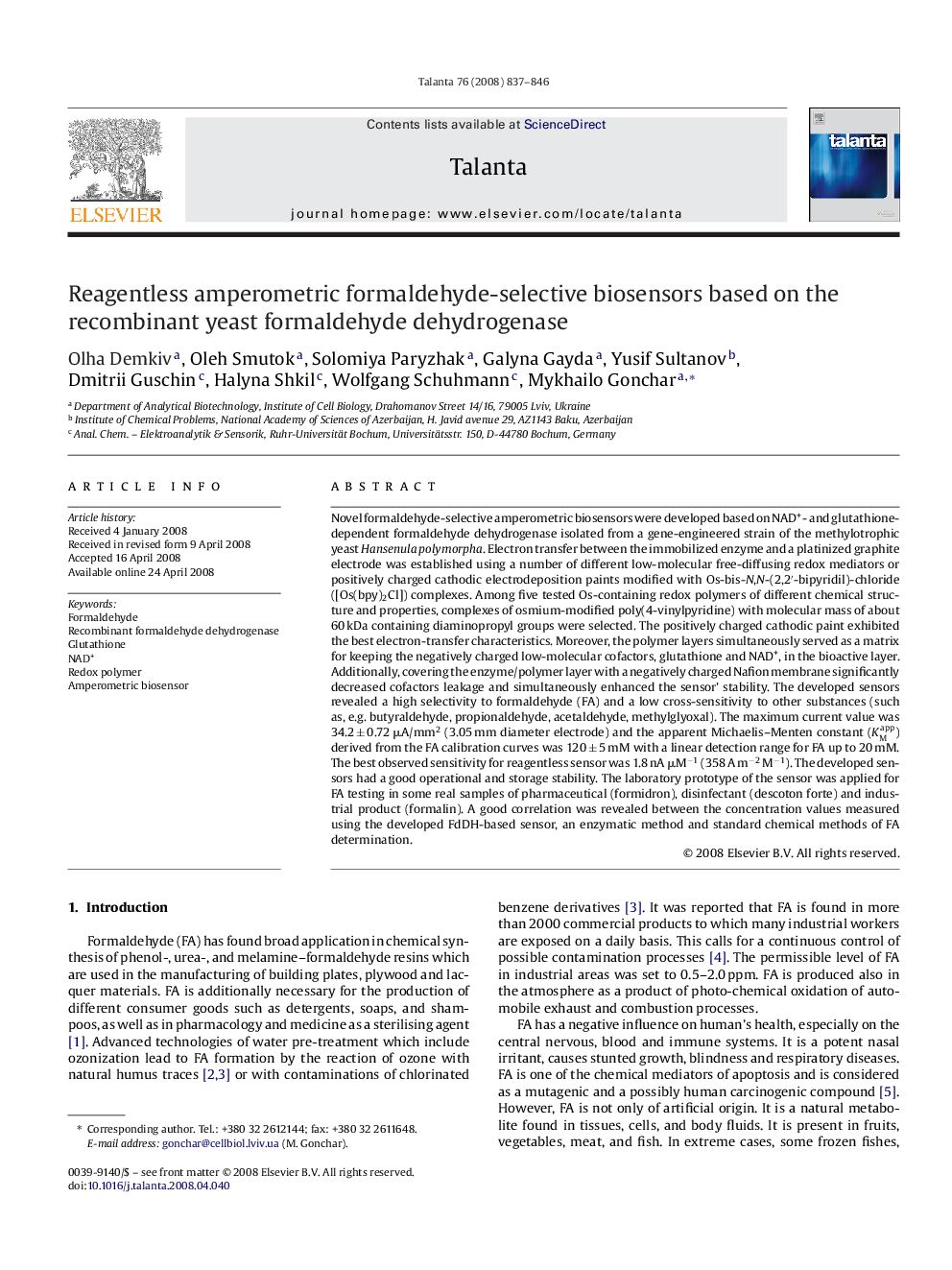| Article ID | Journal | Published Year | Pages | File Type |
|---|---|---|---|---|
| 1243389 | Talanta | 2008 | 10 Pages |
Novel formaldehyde-selective amperometric biosensors were developed based on NAD+- and glutathione-dependent formaldehyde dehydrogenase isolated from a gene-engineered strain of the methylotrophic yeast Hansenula polymorpha. Electron transfer between the immobilized enzyme and a platinized graphite electrode was established using a number of different low-molecular free-diffusing redox mediators or positively charged cathodic electrodeposition paints modified with Os-bis-N,N-(2,2′-bipyridil)-chloride ([Os(bpy)2Cl]) complexes. Among five tested Os-containing redox polymers of different chemical structure and properties, complexes of osmium-modified poly(4-vinylpyridine) with molecular mass of about 60 kDa containing diaminopropyl groups were selected. The positively charged cathodic paint exhibited the best electron-transfer characteristics. Moreover, the polymer layers simultaneously served as a matrix for keeping the negatively charged low-molecular cofactors, glutathione and NAD+, in the bioactive layer. Additionally, covering the enzyme/polymer layer with a negatively charged Nafion membrane significantly decreased cofactors leakage and simultaneously enhanced the sensor’ stability. The developed sensors revealed a high selectivity to formaldehyde (FA) and a low cross-sensitivity to other substances (such as, e.g. butyraldehyde, propionaldehyde, acetaldehyde, methylglyoxal). The maximum current value was 34.2 ± 0.72 μA/mm2 (3.05 mm diameter electrode) and the apparent Michaelis–Menten constant (KMapp) derived from the FA calibration curves was 120 ± 5 mM with a linear detection range for FA up to 20 mM. The best observed sensitivity for reagentless sensor was 1.8 nA μM−1 (358 A m−2 M−1). The developed sensors had a good operational and storage stability. The laboratory prototype of the sensor was applied for FA testing in some real samples of pharmaceutical (formidron), disinfectant (descoton forte) and industrial product (formalin). A good correlation was revealed between the concentration values measured using the developed FdDH-based sensor, an enzymatic method and standard chemical methods of FA determination.
